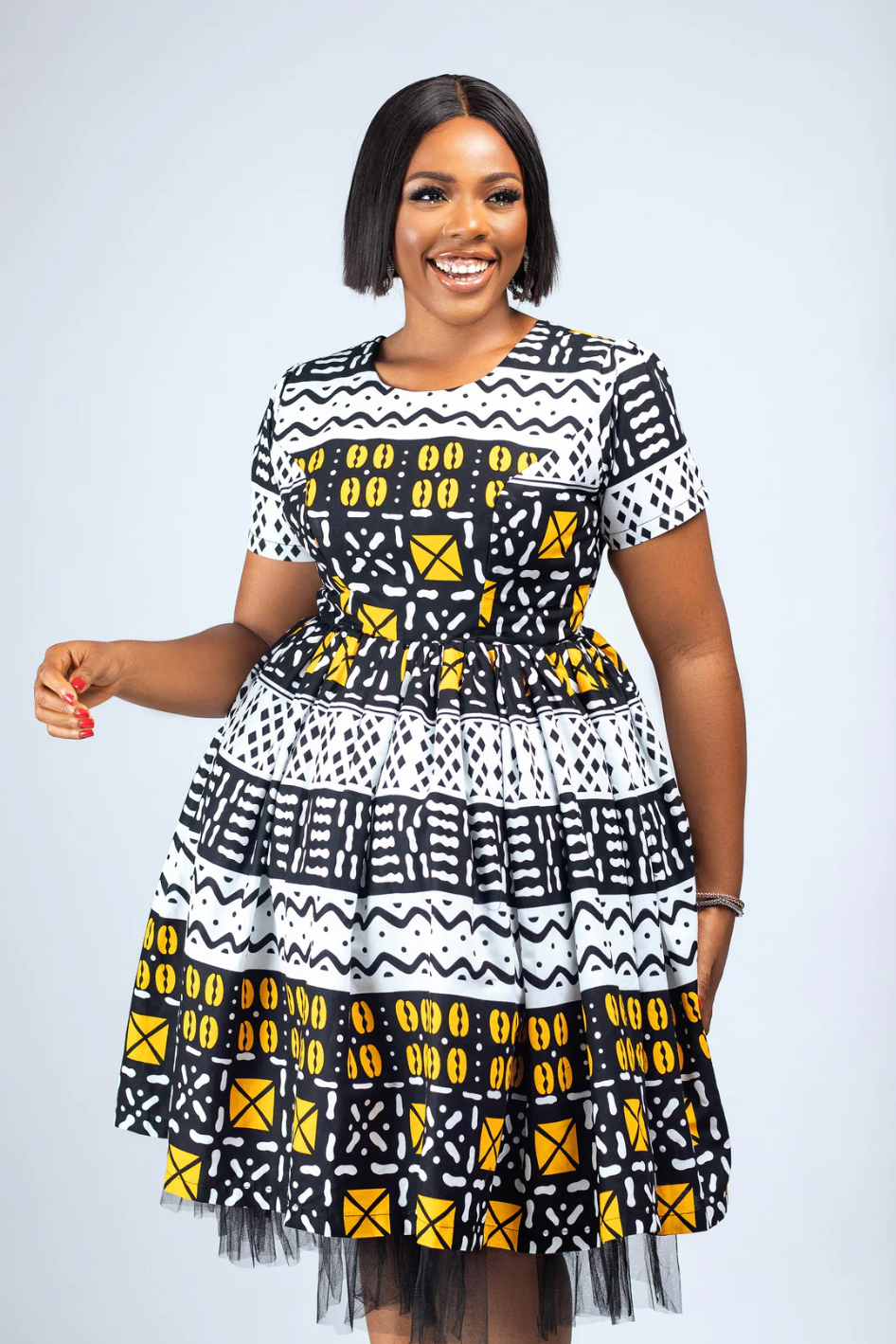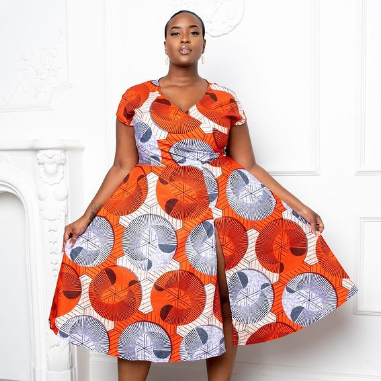What is African Print? Learn the History and Origin
When you think of African prints, it is not uncommon to think of bright colours, geometric shapes or prints and patterns. I grew up around these fabrics and recognized them as a symbol of my identity long before I was aware of their complex and culturally diverse history. They are worn by many in Africa – especially in the West African region. It is gaining ground even in other parts of the world. And today, there are so many places to buy African print fabrics online. However, as the industry would have it, the African print isn’t really from Africa. Are you surprised? Yes, you should be and with good reason. Ankara or African print is originally an European-made print that found its name and eventually its permanent home in Africa due to the high market demand it received after being introduced to West African countries.
What is African print?
African print is another name for Dutch wax prints. It is a type of 100% cotton material or fabric used for clothing, particularly in West Africa and other parts of the continent. It is often produced in bright colour(s) and often features different motif designs; these are the prints and patterns, many of which may have a symbolic meaning such as proverbs or other hidden messages with lessons to learn in them. These lessons are then preserved and passed down to generations through an oral tradition. African prints are highly versatile, they may be used to make accessories and other products such as window drapes, home decor and more.
How did African prints start?
Well, how did it start you ask? African wax prints (which is actually Dutch-wax), otherwise known as Ankara or Kitenge as it is popularly called actually started in Indonesia as batik. The Indonesians made batik – colourful print fabrics using a wax-resist dyeing method. Eventually, in the 1850s the Europeans, particularly the Dutch decided to imitate the process. Then, tried to flood the Indonesian market with colourful, European-made wax prints but the Indonesians rejected the fabrics.
It is simply a case of what is good for the goose may not be good for the gander when it comes to the African prints and why the Indonesians rejected them. It mainly boils down to the technique and perceived inferiority of the print dyeing process used to create the African prints. Basically, the Indonesians believed the wax prints didn’t measure up to the hand-made quality of their batik. The Europeans had industrialized the batik-making process. The machine-made or roller print version produced some imperfections which did not please the Indonesian market. Looking for new markets for their prints, the Dutch eventually turned to West Africa and it took off from there.
The Europeans introduced the fabrics to West African countries where they were embraced. Right now, the various colours, patterns and prints of these fabrics have made their way into the African fashion narrative and are so popular amongst the people. The prints are widely accessible and worn by both males and females from all every socio-economic status. These Ankara fabrics are now etched in the African history so much that it seems they are not going anywhere (at least not anytime soon).
Although there are a few indigenous wax print companies still around in Africa, majority of them are either suffering from the influx of legal and illegal prints from the Chinese or have shut down their operations. Majority of wax prints are still manufactured in Europe and are higher in quality and more expensive compared to the other range of fabrics.
Storytelling through African prints
African prints may be used to communicate different customer stories including their history but when it comes to its own, there is a lack of clarity of what is authentic and what is not. For reason, one can assume that the fabric has to take on the story of its wearer and on occasion. Each print tells a unique story. Both batik prints in original handcrafted form and its derivative roller wax print are accepted in the African market. And for many men and women, the patterns of the wax prints are a form of expression and even communication, announcing everything from their marital status and mood, to their political and religious beliefs.
“Abstract names are given to the prints to suggest an important event, personality or a popular proverb. According to the merchandisers, the wearer uses the symbolism of the print as a form of visual communication,” says researchers in a study titled “Symbolic Significance Of African Prints: A Dying Phenomenon In Contemporary Print Designs In Ghana.”
Established in 1846, the most sought after African wax prints are produced in Holland by a company called Vlisco. Highly regarded wax prints made in Ghana include GTP, Woodin, ATL, and DaViva. Considering the somewhat crippled state of the remaining Indigenous textile industries within the continent and despite the fact the African print does not largely contribute to the economic empowerment of its own people, it would be very remiss to say that the fabric is not indeed part of the African identity. In between the threads of these beautifully woven pieces of history and art are a part of every African’s relic that is truly here to stay.
Did you enjoy this post? Then SUBSCRIBE HERE to be in the know of my other posts!
What is your opinion on this complex and controversial origin of the African print?






I have learned a lot now about the African prints, very interesting! I have always thought that these colours are initially from Africa.
xx Simone
Little Glittery Box
Hi Simone,
Yeah, there is so much history and culture behind the African print. Quite an interesting learning experience!
African prints are simply so colorful and inspiring to look at 🙂 Love this post, I feel like I learned a few cool things about the origins of the prints and fabric 🙂
– Marina W
http://www.waitmarinawho.com/2019/02/rendezvous-in-brugge-belgium.html
Hi Marina,
Thanks for stopping by the blog! It is great to hear you learned something new from this post and that you love the colourful nature of the prints. Hope you will continue to visit and enjoy the great content. 🙂
I’ve read in the past about how the prints were originally from Europe but I had no idea about the Indonesia thing so thank you, I learned something new. And I totally agree with you, the origins long ago might be European but Ankara is definitely a part of the African identity. xx
Coco Bella Blog
Hello Demilade,
Cheers to learning something new everyday! Yes, there is so much history behind the African print and good information to know as well.
I actually learn a lot from your blog. I feel I can now answer some questions from my customers. I love blogs.
Hello Tunde,
It’s so flattering to hear that the information you are getting from this blog is adding to your knowledge and helping to assist your customers. It means I am definitely doing something right!